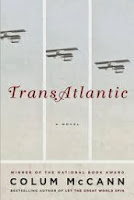We're
finally moved in upstairs again since the remodel (yay!), so I can find everything once more and now I actually have time to get back to the books about fictional cults I've set aside to read this month. I think I'll be carrying the list into December, because there are quite a few more I want to get to. For now, here are two incredible novels that I most highly recommend.
Up first: Gore Vidal's
Messiah.
9780141180397
Penguin, 1998
originally published 1954
256 pp
paperback
"If this thing spreads it will become organized. If it becomes organized, secondary considerations will obscure the point."
If ever there was a reason to take a break from reading what's on the New York Times bestseller list or from current fiction, this book is it. Going onto the favorites list for 2013, this novel is simply amazing. Considering it was first published in 1954, it's surprisingly current and definitely way ahead of its time. In this book, a new religion is born, and a simple message offered by a charismatic young man becomes organized, publicized, bureaucratized and ultimately bastardized before it encompasses the entire non-Islamic world. It's highly satirical, funny in a dark humor sort of way, and makes you appreciate how perceptive this author must have been, considering all of the events coming out of messianic cults over the last few decades.
Eugene Luther (which is actually Gore Vidal's real name) has been living in Egypt for the last fifty years under an assumed name. He is working on an account of "that original crisis" that sent him there, which began when he was introduced to a former embalmer by the name of John Cave ("a pair of initials calculated to amaze the innocent"). Luther meets him through Iris Mortimer, a woman to whom he was introduced by another character, Clarissa. On a visit to California, he first hears Cave speak at a small gathering, and somewhat "against his will" Luther realizes that he was totally absorbed. As Iris notes, "There's something in oneself which stirs and comes alive at his touch, through his agency." Cave's message is relatively simple: "it is good to die." This was the sole vision of John Cave, at first anyway; everything changes when Cave is put in the hands of publicist Paul Himmell and his erstwhile partner, Jungian analyst Dr. Stokharin, and Cavite Inc. is born. It's Iris who notes that
"a society which knows what we know, which believes in Cave and what he says, will be a pleasanter place in which to live, less anxious, more tolerant."
Himmell puts Cave on television and his popularity soars -- but to Himmell and his investors, Cave has become a product. While Luther has misgivings about the whole religion phenomena, telling the Cavite Board of Directors that they will
"... do more harm than good by attempting to supplant old dogmas and customs with new dogmas. It will be the same in the end, except that the old is less militant, less dangerous than a new order imposed by enthusiasts,"
he readily accepts being drafted to supply background on Cave, to give him a "respectful ancestry," and soon he is also drafting dialogues, supposedly containing doctrine that becomes the basis of "Cavesword," the new religion. Millions of people are enticed by Cave's TV presence, and Cavesword spreads like wildfire, despite threats posed by leaders of Christianity, and despite Luther's growing misgivings.
But Cave sells -- and becomes even more popular when Cave, a natural recluse, is kept away from crowds allowing a mystique and mythology to grow. It isn't long before Cavesword spawns centers in all major cities run by Residents and Communicators; nonconformists are "swayed" toward Cavesword in these places; eventually they become centers where practitioners can commit suicide. As the story gets closer to why Luther is living in Egypt under an assumed name, it also starts taking on even more frightening tones.
This is, of course, a barebones outline of plot; this is another one you really can't get a feel for without reading it, but
Messiah is simply put, an outstanding novel. It seems to parallels the rise of Christianity, including the dissenters, the overlaying of old traditions to make new ones, the schisms, and mythologies that grew out of historical reality. It examines the relationship between postwar American anxieties and the need for some kind of larger-than-life solution to offer people beyond the old, superstition-based religions. It also looks at television's ability as the ultimate medium of persuasion -- considering that this book was written in 1954, that's an incredibly farsighted vision on Vidal's part. But really, the best thing about this book is the realization that comes to Luther as he comes to understand his real role vis-a-vis John Cave; sadly it's at the end so I can't really spill it. It is however, a revelation that had me thinking about this novel long after I'd finished it -- in fact, the same is true of the entire book. There is so much more to discuss, but if I wrote all I really wanted to, it would be more like a paper rather than a review.
Messiah is also first book I've ever read by Gore Vidal, and I absolutely love the way he wrote -- so much so that I've already picked up two more of his books. It's as good or better than much of the fiction coming out currently, so if you're into great writing, excellent plotting and a story that causes you to sit and mull over what you've just read, you really can't make a much better choice than this one. It shouldn't be pooh-poohed just because it's nearly 60 years old ... you'd think after reading it that the author somehow had access to news of the future. Superlative. That's my final word.
Next:
Survivor, by Chuck Palahniuk
9780385498722
Anchor Books, 2000
(originally published 1999)
289 pp
paperback
"You're going up and up and up and not getting anywhere. It's the illusion of progress. What you want to think about is your salvation." Going from Vidal's sublime
Messiah to Palahniuk's ridiculously sublime
Survivor isn't such a great leap, really. There are a few shared ideas between the two books, for example, the importance of television as a medium for publicity and maximum exposure, the "messiah" as commodity in the hands of publicists and agents, and the reimagining of historical fact into a mythology designed for public consumption. At the same time, only Chuck Palahniuk can write like Chuck Palahniuk, throwing in some very pointed barbs at American lifestyles. As I noted somewhere, this book has some very disturbing scenes, but god help me, I couldn't help but laugh.
If you haven't yet read this novel, you might get a little confused like I did when I opened the first page. I thought my book had been screwed up in the binding process -- it starts on page 289, with chapter 47. It's gimmicky, but it really does work.
Survivor is the story of Tender Branson, who, when we first meet him, is on an airplane minus passengers and pilot, the former having been deplaned shortly after takeoff and the latter having parachuted after giving tips to Branson about how to keep the plane in the air after the pilot jumps, the amount of time before all four engines flame out, etc. Branson is the sole occupant of the plane, and is now telling his true life story to the airplane's black box which will survive the inevitable plane crash. He wants to get it clear right away that he is no murderer; getting from the beginning to the end when he finally reveals the reasons behind clearing his name is the journey the reader makes through the novel.
And what a story it is. Prior to sitting in the cockpit, Branson's adult life was one as a "full-time drudge," and part-time god." His day job was slaving away at housecleaning for wealthy employers, guided by a day planner, so that at any given hour of his workday, he and his employers know what he's doing. He's interrupted periodically by calls from his boss, who asks him questions about such topics as how to eat lobster correctly at an upcoming dinner, which forks to use, that sort of thing. Tender Branson is a whiz at home economics; he spent his life being schooled in running the perfect home. He is also, as we discover shortly after meeting him, a member of the federal Survivor Retention Program, which affords him a caseworker with whom he meets each week, a tiny apartment with a shared hallway bathroom, free government cheese and a bus pass. Branson grew up in the Nebraska church district colony of the Creedish; at age 17 he was baptized and sent out as a labor missionary. This was the common practice of the Creedish; all boys but the first-born sons (all named Adam) went out into the world to work and shared the name of Tender. The girls who were not chosen as wives for the first-born sons went out to work as well, sharing the name of Biddy. Back home, the Adams and their wives had children, children and more children, and the children spent their lives learning a particular trade. There were rules for living on the outside, though -- no dancing, no listening to broadcast media, and the biggest one of all was this one:
"If the members of the church district colony felt summoned by God, rejoice. When the apocalypse was imminent, celebrate, and all Creedish must deliver themselves unto God, amen."
While Tender Branson is cleaning grout and getting bloodstains out of leather, the word comes that the Creedish in Nebraska have been delivered; he is taken into the Survival Retention program so that he doesn't off himself. There are rashes of suicides among the survivors, and at some point, Tender becomes the only surviving member of the cult (well, as far as the authorities know), and thanks to a savvy agent whose job it is to make cult suicide look "fresh and exciting every time around," is turned into a new messiah for the people.
As Tender's lifestory is recorded for posterity, the author takes potshots at different facets of American culture that blend into Tender's experience. For example, while being refitted as a "new guru" for people who need to "make sense of their risk-free boredom of a lifestyle," he climbs the "stairmaster to heaven," and is wardrobed, told what to say, and pumped full of botox, steroids, drugs etc in order to make him media perfect. As his agent tells him,
"Nobody wants to worship you if you have the same problems, the same bad breath and messy hair and hangnails as a regular person."
Sitting in the cockpit, Branson reflects that "Reality means you live until you die...The real truth is nobody wants reality."
There are also riffs on diagnosing yourself via the DSM with the disorders of the day, things people pray for here combined into his "Book of Very Common Prayer," people being so busy with working and making money that they don't have time to enjoy their gardens, but one of the biggest ideas that comes out of this story is based on how to find salvation in the face of boredom that comes from sameness and having no control over your own life.
As I said earlier, it's not all funny, because there are some pretty tragic things described in here, but I defy anyone not to laugh while reading this book. Fantastic novel -- if you haven't read it, go and get yourself a copy soon. I love Chuck Palahniuk because he's such a great satirist, expressing questions about life in terms everyone can understand and recognize. Another one not to be missed.








 T
T





















